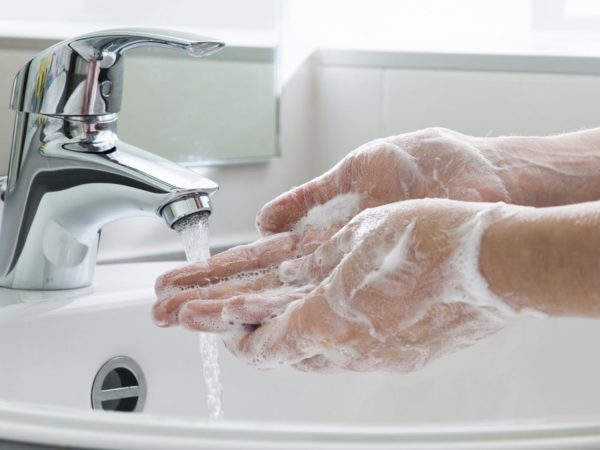Cold Water For Cleaner Hands?
I’ve heard that it is best to wash your hands in cold rather than warm water. This makes no sense to me. Can you tell me if there is actually a health reason to use cold water for hand washing?
Andrew Weil, M.D. | April 10, 2014

A team of researchers at Vanderbilt University looked into this question and concluded that contrary to widespread belief, washing your hands in hot water doesn’t kill germs more effectively and doesn’t get your hands any cleaner than washing with cold water. In order to kill bacteria on your hands with water alone, you would have to use boiling liquid that would burn you – 212 degrees Fahrenheit or 99.98 degrees Centigrade. In general, the temperature of hot water used for hand washing ranges from 104 to 131 degrees Fahrenheit or 40 to 55 degrees Centigrade. The Vanderbilt researchers noted that at the high end of that range, the water temperature might kill some germs but could also scald your skin. Another downside to using hot water for hand washing: it “can irritate the skin and affect the protective layer on the outside, which can cause it to be less resistant to bacteria,” according to Vanderbilt researcher Amanda R. Carrico.
You may be surprised to learn that the investigators found that washing your hands in cold water temperatures of 40 degrees Fahrenheit or 4.4 degrees Centigrade seems to reduce bacteria as effectively as warmer water, provided that you actually scrub, rinse and dry your hands properly.
The main reason the Vanderbilt team looked into this issue was to gauge the effect of using hot water for hand washing on the environment. They found that in the U.S., people use warm or hot water for hand washing 64 percent of the time. Figuring an estimated 800 billion hand washings in warm or hot water in the U.S. annually, the researchers calculated the energy cost at roughly the equivalent of the emissions of two coal-fired power plants, or 1,250,000 passenger cars. They also figured it would top the annual greenhouse gas emissions of El Salvador. Using cooler water for hand washing would eliminate the annual energy-related carbon emissions of 299,700 U.S. homes or the total annual emissions from the U.S. zinc or lead industries.
To investigate the energy cost of hand washing, the Vanderbilt researchers asked 510 American adults around the country how often they wash their hands, for how long and how hot the water is. They found that nearly 70 percent of those interviewed expressed the belief that using hot water for hand washing is more effective than warm, room temperature, or cold water.
The upshot of all this is the recommendation from the Vanderbilt team that we wash our hands with water that is a “comfortable” temperature, which may mean warmer in winter and cooler in summer.
For the record, the U.S. Centers for Disease Control and Prevention (CDC) notes on its website that using warmer water for hand washing may cause more skin irritation and is more environmentally costly. Here are the CDC’s recommendations for effective hand washing:
- Wet your hands with clean, running water (warm or cold), turn off the tap, and apply soap.
- Lather your hands by rubbing them together with the soap. Be sure to lather the backs of your hands, between your fingers, and under your nails.
- Scrub your hands for at least 20 seconds, the time it takes you to hum “Happy Birthday” from beginning to end twice.
- Rinse your hands well under clean, running water.
Dry your hands using a clean towel or air-dry them.
Andrew Weil, M.D.
Sources:
Amanda R. Carrico et al, “The Environmental Cost of Misinformation: Why the Recommendation to Use Elevated Temperatures for Handwashing is Problematic,” International Journal of Consumer Studies, July 1, 2013










